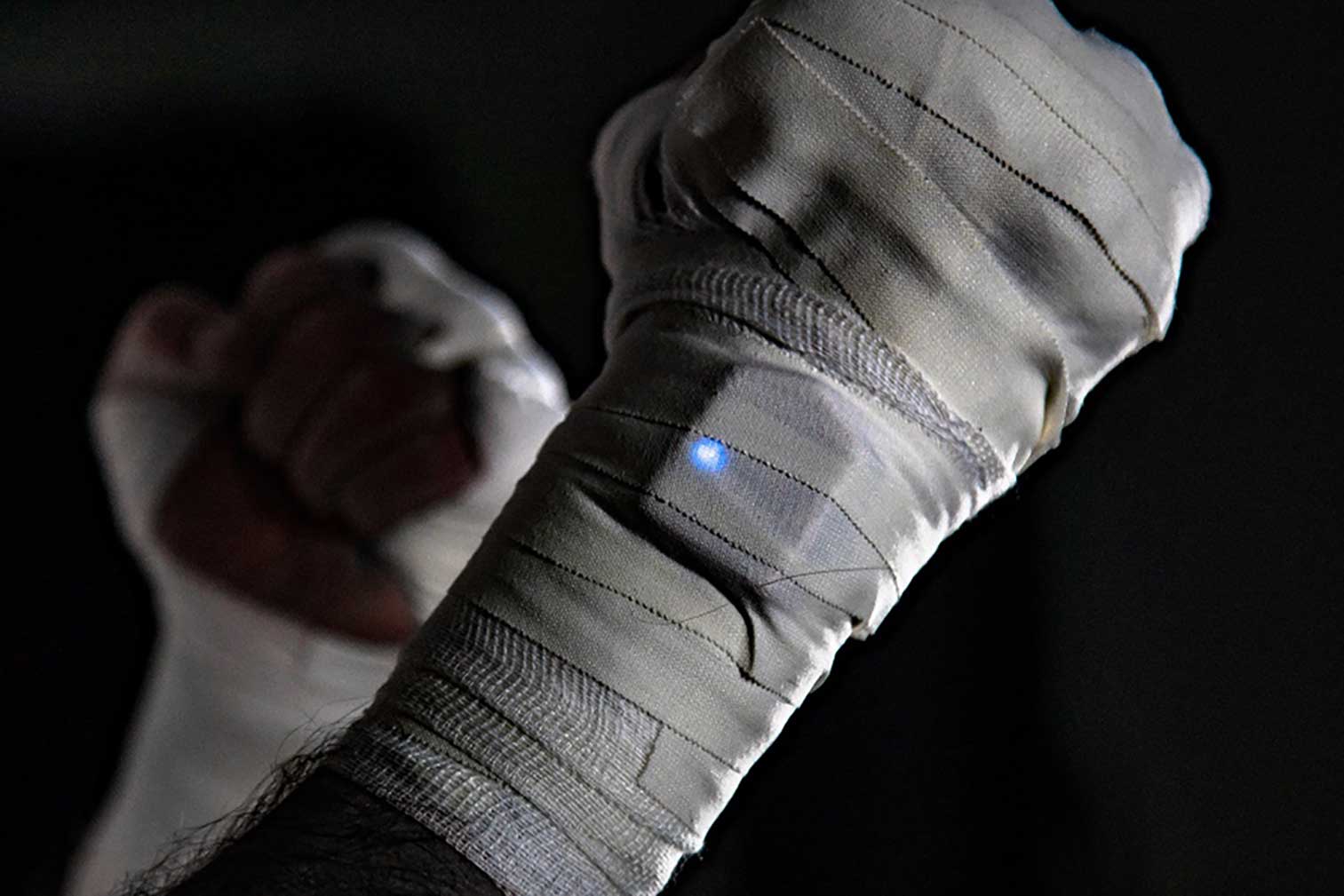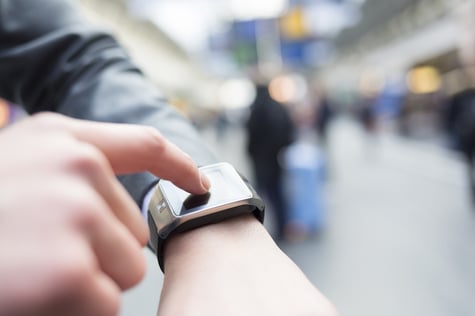Hykso is a new venture founded by CEO Khalil Zahar, who has a Master’s Degree in MEMS, and is also a successful boxer who trained with the top coaches in Toronto. Zahar reached a high level of proficiency through his training - so high in fact that it became difficult to discern further improvements in his performance – and the two entrepreneurs spotted the opportunity for a device that could measure a boxer’s punches with a high degree of precision and track his or her progress in training. Hykso was formed to develop that product, and the company is now a hot young start-up in California’s wearable technology sector.
Hykso’s product is a wrap that the boxer wears around the wrist, with sensors that detect the force of the physical effort in each blow, then the data from the punch speed and punch count are combined to create an accurate measurement of the blow.
The punch tracker was a particularly challenging product to develop. The first challenge was to develop the algorithm that calculates the data. It is far more complex than just a punch-counter. As with a lot of wearable technologies, a boxer is always on the move, so the product’s sensors have to measure the super-acceleration of the punch - most wearable devices move far more slowly. Each Hykso unit contains two sensors and two antennas to track the movement.
It’s also in the nature of boxing that the movements are not ‘clean’. The algorithm has to determine what comprises a punch and what does not, and device needs to be mechanically strong, which is a challenge for such a tiny device.
To measure the speed and power of a punch, Hykso pinpoints the position of the device precisely in 3D free space and uses advanced statistics to determine an accurate measure of the speed. Hykso use their exceptional mathematical capabilities to achieve this feat of calculation. Then the data is translated into results that can help a coach to train better boxers.
Incorporating the antennas into the design was another challenge. Hykso was aiming for a range of 10 metres, but the first antenna they tried always seemed to be out of range. Then when the antenna seemed OK, performance tailed off when the product was worn on the wrist, and it was not clear why this was. Electronic Designer Alex Marcotte realised that the human body can absorb radiation and decided look for a better solution – ideally a super-small antenna device with a long range. This would provide Hykso’s customers with the best experience.
It was at this time that Hykso first talked with global technology solutions provider Arrow Electronics who introduced them to Antenova. Antenova’s local technical support team in Northern California helped with the selection of a different antenna, and a better PCB layout that would achieve a longer range. The Antenova team explained how the antenna works, and how the energy dissipates away like a car headlight reflecting away from the car. The space for the antenna on Hykso’s PCB was very small, its position was restricted, and they chose Antenova’s chip antenna, Comata, P/N A6111, which measures 12.8 x 3.6 3.3mm.
With such a unique device, there was no way of estimating its range – the only way was to build one and test it. A few questions arose. How would the board perform with the hand-loading effect? Would the antenna perform any differently on the left or the right corner of the board? With advice from the technical support team, and using the guidelines on Antenova’s datasheets, the board was re-designed, and the Gerber files were forwarded to Antenova for testing.
The tests had to replicate the sensors as they would be used in situ inside the boxing wrap and a boxing glove, so Antenova used a phantom arm. Antenova’s standard tests include a matching service, 3D gain patterns and an efficiency test. These are all part of the process of fine-tuning an antenna. The tests were completed very quickly and the device immediately achieved a range of 50% further than with the previous antenna.
Alex Marcotte explains. “I am not really familiar with RF, so the results from this antenna seemed like pure magic.” The initial tuning of the antenna was organised through Antenova’s partner Arrow Electronics.
This is the first product of its kind in the market. The Beta stage, where a number of coaches and fighters, including some Olympian boxers tried it and gave their feedback, is complete, and Hykso has invested a lot of time in perfecting the product. They are now ready to ship their first few thousand deliveries to customers in 2017.




